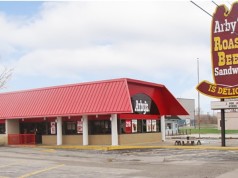DNR SEEKS PRIVATE LANDOWNERS TO HELP IMPROVE DEER WINTERING HABITAT IN THREE NORTHERN UPPER PENINSULA COUNTIES
UPCOMING MEETING TO DETAIL AVAILABLE COST-SHARING PROGRAMS
WASHINGTON, D.C. – (RealEstateRama) — Private landowners interested in helping to maintain or improve Upper Peninsula deer wintering habitat can learn more about the subject and cost-share programs available to aid in those efforts at an upcoming meeting the Michigan Department of Natural Resources has scheduled for July 20.
The meeting, which will focus on private land ownership in northern Ontonagon, Houghton and Keweenaw counties, will be from 6-8 p.m. (EDT) July 20 at the Greenland Township Community Center, located at 1502 Mass Avenue, in Mass City.
To avoid deep snow, deer migrate each winter throughout most of the U.P. to deer wintering complexes – often called deer yards – containing dense canopies of conifer trees, especially cedar and hemlock.
This important conifer shelter reduces snow depth and allows deer to move over connected snow-packed trails. These trail systems provide access to food and assist deer in evading predators.
Ontonagon, Houghton and Keweenaw counties contain some of the region’s deer wintering complexes. The past three severe winters and subsequent decline in deer numbers have raised concerns about habitat conditions in these complexes, especially winter shelter.
To help improve habitat conditions for deer, the DNR needs help from private landowners. Of the 10.6 million acres of land in the U.P., roughly 20 percent is managed by the state.
“Predation, hunter harvest and winter severity all contribute to deer population fluctuations; however, winter habitat quality is the most important factor influencing deer population trends,” said Gary Willis, west U.P. DNR service forester. “Improving winter habitat is an action in which all landowners can make a contribution.”
In the U.P., where deer have to migrate to survive winter, they gather on about 30 percent of their range. The U.P. Habitat Workgroup, which is composed of natural resource professionals, private landowners and sportsmen’s groups, has been working for several months toward increased habitat improvements in deer wintering complexes.
The upcoming meeting in Ontonagon County is an extension of those efforts. Similar meetings on deer wintering complexes have been held for Baraga, Iron, Gogebic and southern Ontonagon counties.
“Those meetings have been greatly successful,” Willis said. “We’ve had fantastic turnout.”
Recently, the DNR mailed letters to landowners whose property lies near deer wintering complexes in northern Ontonagon, Houghton and Keweenaw counties.
The letters notify landowners of the July 20 meeting, invite them to attend to learn more about habitat improvement opportunities and detail what they can do on their properties to aid deer populations.
At the meetings, Steve Carson, of the U.P. Habitat Workgroup and a DNR wildlife biologist, will provide an introduction to deer wintering complex management plans, a general overview of deer winter range in the U.P. and general forest management guidelines.
Willis will discuss the Forest Stewardship Program.
Ontonagon-Gogebic Conservation District forester Cory Howes will introduce the Forestry Assistance Program and detail cost share programs available to private forestland owners to improve deer habitat.
Each of the meetings will conclude with a panel discussion featuring Carson, Willis, Howes, U.P. Habitat Workgroup wildlife biologist Jim Hammill, DNR field operations manager Bill Scullon, Pam Nankervis, a wildlife biologist with the U.S. Fish & Wildlife Service and Eric Stier of American Forest Management.
“My goal, in addition to making folks aware of the critical need to retain conifer stands in deer wintering complexes, is to ultimately reach out to private landowners in ways that have not been used before to encourage them to work with a resource professional to first obtain a forest management plan and follow up with management plan implementation,” Willis said.
Given the initial success registered in Gogebic County, Iron and Baraga counties, the initiative is now being spread across the U.P.
Check out management plans for the deer wintering complexes in the Upper Peninsula.
For more information on various cost share programs that can help offset the cost of resource management plan preparation, contact ">Gary Willis at the DNR Baraga office at 906-353-6651, ext 122.
The Ontonagon-Gogebic Conservation District has a forester on staff available for a free site visit to your property. Contact .">Cory Howes, at 906-667-1100, ext. 632 to help decide if there are financial assistance programs that can help improve deer wintering habitat.
Find out more information about the U.P. Habitat Workgroup. Contact ">Steve Carson at 906-563-9247.
The Michigan Department of Natural Resources is committed to the conservation, protection, management, use and enjoyment of the state’s natural and cultural resources for current and future generations. For more information, go to www.michigan.gov/dnr.
Contact: Cory Howes, 906-667-1100 ext. 632
Agency: Natural Resources




